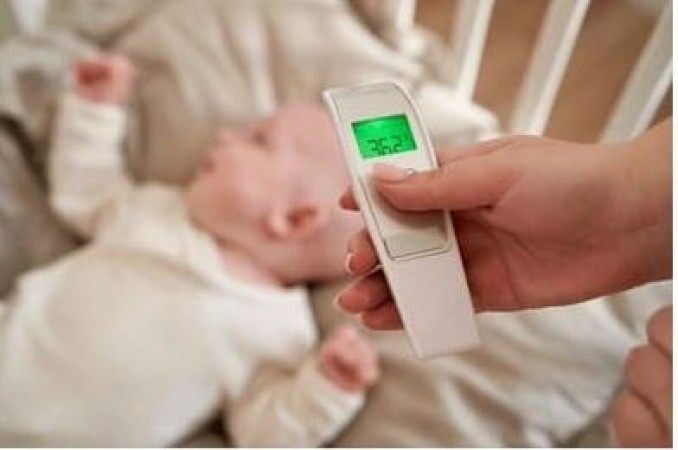
From digital to infrared, there are many types of thermometers available in the market. Understand their features and choose the right thermometer for your needs.
Thermometers are essential tools used to measure body temperature accurately and efficiently. Having a reliable thermometer at home can prove to be quite helpful. By determining an individual’s body temperature and whether or not he/she has fever, a thermometer gives you crucial information about one's health and guides appropriate measures for care. With advancements in technology, various types of thermometers have been developed to cater to different needs and applications. Here’s an overview of different types of thermometers and how to use them.
They work by utilising heat sensors to measure body temperature. Digital thermometers can be employed to take temperature readings orally or in the armpit. These thermometers are known for their speed and accuracy, providing precise readings within a minute or less. It's important to note that armpit (axillary) temperature readings tend to be about 0.5-1°F lower than oral readings.
For infants and children, the preferred method is using an underarm digital thermometer. To use this method, follow these steps:
To use the oral (under the tongue) digital thermometer, follow these guidelines:
Remember to consult the manufacturer's instructions for specific guidance on using your digital thermometer.
These thermometers utilise infrared ray technology to measure the temperature inside the ear canal. They offer a quick way to take a child's temperature, which can be particularly helpful if the child has difficulty sitting still. However, it's important to note that ear thermometers can be expensive and may provide inaccurate readings if not positioned correctly in the ear. Tympanic readings typically run 0.5-1°F higher than oral temperature readings. To ensure accurate results, carefully follow the manufacturer's instructions.
Here's how to use an ear thermometer:
These non-contact thermometers utilise infrared sensors to gauge the temperature of your superficial temporal artery, a branch of your carotid artery. These thermometers have gained popularity for their ability to provide temperature readings without physical contact, making them suitable for use at various places such as airports, stadiums, and stores.
It's important to note that forehead temperature readings typically run approximately 1°F lower than oral temperature readings. For accurate results, it's crucial to position infrared thermometers correctly in accordance with the manufacturer's instructions. Failing to do so may result in incorrect readings. Additionally, external factors like indoor heating, wind, and direct sunlight can affect the accuracy of readings.
They used to be the primary choice for measuring temperature. However, due to safety concerns, they are no longer widely accessible and are even prohibited in certain regions. Mercury thermometers offer precise temperature readings and can be used rectally, orally, or under the arm. Nonetheless, they have certain drawbacks.
One challenge with mercury thermometers is the difficulty in reading them accurately. Also, they are required to remain in place for about 3 minutes. Furthermore, since they are constructed from glass, mercury thermometers are prone to breakage, which can result in the release of toxic mercury. In the event of breakage, they may also pose a risk of cuts or glass splinters.
They are designed for newborns who are at least three months old and use pacifiers. The main advantage of pacifier thermometers is the ease of using them. However, there are certain considerations to keep in mind. To obtain a reading, pacifier thermometers need to remain in the baby's mouth without any movement for up to 6 minutes. It's important to note that pacifier thermometers provide an approximation of temperature, instead of an exact measurement. The accuracy of the reading can be affected by the baby's ability to stay calm during the measurement, which may pose challenges.
Digital thermometers are widely used and offer versatility as they can be used rectally, orally, or under the arm. Another popular option is the no-contact infrared thermometer, particularly in social settings. Ultimately, the best thermometer for you is the one that you can use comfortably and correctly.
The Xiaomi Redmi 20: Know all Features related to it
Soon: Oppo Reno 9A will launch in India, Check the features and specifications
AIPRM Extension for GPT: Unlocking New Possibilities in AI Content Generation